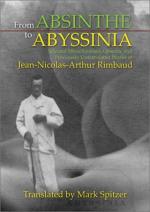|
This section contains 5,872 words (approx. 20 pages at 300 words per page) |

|
SOURCE: Lee, Daryl. “Rimbaud's Ruin of French Verse: Verse Spatiality and the Paris Commune Ruins.” Nineteenth-Century French Studies 32, nos. 1 & 2 (fall-winter 2003-2004): 69-82.
In the following essay, Lee argues, through a reading of “Qu'est-ce pour nous, mon coeur” (“What, For Us, My Heart”), that Rimbaud revolted against the bourgeoisie and the French Empire by attacking them openly in his poetry, using a variety of dialects, and subverting traditional literary forms.
… comme l'architecture d'une ville inhabitée ou soufflée, réduite à son squelette par quelque catastrophe de la nature ou de l'art. Ville non plus habitée ni simplement délaissée mais hantée plutôt par le sens et la culture.
—Jacques Derrida1
Triste nouvelle! Le feu a pris lundi dernier au Moniteur. La bibliothèque tout entière a été la proie aux flammes. … J'ai désiré, parfois, que le même malheur atteignât à tous...
|
This section contains 5,872 words (approx. 20 pages at 300 words per page) |

|


